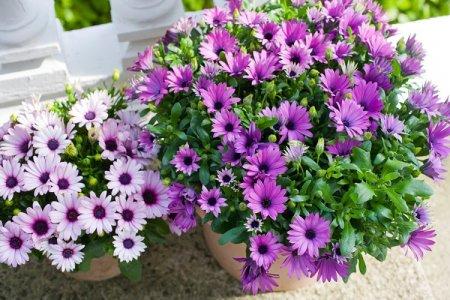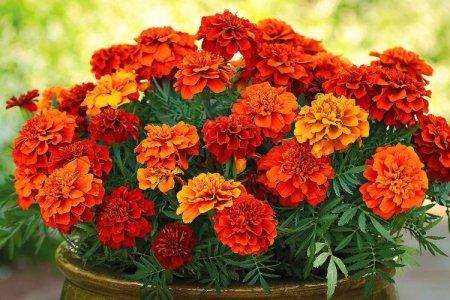
Delicate and elegant, the lily needs no introduction or advertising. But what is really worth talking about is how to care for such an exotic beauty. And at the same time, we found out what types of lilies are best to grow, what diseases they suffer from and what else to pay attention to!
general information
Lily is a beautiful bulbous plant with dozens and hundreds of different varieties. Depending on the species, the stem height can vary from 15 cm to 2.5 m. And almost always these are large funnel-shaped flowers of 6 petals up to 14 cm in diameter.
Lily shades can be almost any, except blue. The flowering times are also different, and so much so that with the right combination of species, the garden will bloom continuously from late spring to autumn. The leaves are quite long and ovoid, and buds are formed from the lower plates, which then grow into an independent bulb.
An interesting feature is also that lilies can be pollinated among themselves and suddenly change color. The root system grows from the bulb, and in most cases the roots are perennial. Some varieties are covered with thin stem roots for better nutrition, and also for stability.

Types of lilies
The number of species and varieties of lilies, along with all the hybrids, has long exceeded the 5 thousand mark. We have selected the most popular varieties to help you navigate in all the variety!
Asiatic lilies
This is perhaps the most numerous and varied category. Most varieties are resistant to pests and low temperatures. Large buds open up to 14 cm around the end of June.

Long-flowered lilies
The flowers of these varieties are so elongated that they resemble tubules. Most often they are white in color and with a very expressive aroma. These are thermophilic varieties that mainly live in greenhouses outside the southern regions.

American lilies
Tall and beautiful, they cannot be confused with other species. Firstly, because of the high 2-meter stems. And secondly - because of the unusual speckled color in two colors.

Orleans lilies
Tubular lilies can be of different shapes - elongated, goblet or star-shaped, and that's not all. Two flowering stems grow from one bulb per year.

Curly lilies or martagon
These lilies are tall, up to 1.5 m, but their flowers are smaller - 5-8 cm in diameter. They prefer partial shade and are highly frost-resistant. The main shades are yellow, orange, pink, white, lavender and red.

Oriental lilies
These are Japanese, Korean and other varieties. They are very beautiful and graceful, but thermophilic. But huge flowers can reach a fantastic 30 cm in diameter.

European lilies or candidum
These are luxurious snow-white or cream varieties with flowers of 10-12 cm. Shoot height reaches almost 2 m, and they are excellent in cut. But this is a very capricious variety, and moreover, it is susceptible to fungal diseases.

Lily care
On the one hand, under favorable conditions, lilies do not cause trouble at all. On the other hand, these favorable conditions still need to be created. We have collected general recommendations, but be sure to take into account the individual characteristics of a particular variety.
Temperature
Despite the fact that the root systems of lilies are resistant to different conditions, the delicate ground part does not tolerate too high and too low temperatures. Ideal conditions during the flowering season are around 20 degrees.

Lighting
Most varieties of lilies prefer diffused light or light partial shade. In a strong shade, the flower will not bloom luxuriantly, and too aggressive direct sunlight causes burns.

Watering
Lilies do not tolerate dampness and stagnant water, so water them only when necessary if there is not enough natural rainfall. At the same time, we advise you to avoid the neighborhood with poplars, elms and other too moisture-loving plants that will take moisture away from lilies.

The soil
Most lilies are indifferent to the composition of the soil, although some varieties prefer acidic or alkaline soils. Loam and sandy loam soils flavored with humus will be universal.

Fertilizers and feeding
Lilies definitely need feeding at all stages of development. They mostly prefer potassium and phosphorus. The first fertilizers are applied at the beginning of spring after the emergence of shoots, and then according to the instructions. You can use a special lily mix.

Pruning
It is categorically impossible to cut the stems of lilies immediately after flowering, because with their help the bulb accumulates useful substances. The stem can be cut in the fall after dying off. After flowering, only the seed pods are removed so that the plant does not waste energy on them.
If you cut flowers for a bouquet, choose shoots with at least 5 buds. This is a sure sign that the bulb is already doing well and has grown. But cut off at the bottom - a small fragment should still remain.

Storing the bulbs
Lily bulbs need to be disinfected, dried thoroughly and placed in boxes with peat or sawdust. They should be stored in cool rooms with stable humidity. And best of all - in the refrigerator, because there is a constant temperature. Inspect them periodically for damage and decay, and remove any suspicious areas.

Wintering
Most varieties of lilies that winter in the garden do not need additional cover. But if there is no snow at all, and the frost has already hit, we advise you to sprinkle them with leaves, needles or peat. Pine needles are best because they attract pests less. And the main thing is to remove the shelter in time, when the snow melts, so as not to block the sun.

Planting and breeding
For planting the bulbs in open ground, the main thing is to choose the right time. It is best to do this in the spring so that the flower takes root securely before winter. But it is fundamentally important that there are definitely no frosts at this time. When planting in autumn, you will definitely need shelter for the winter.
Dig up the soil with fertilizers and ash for enrichment a couple of weeks before planting. Then dig holes about 15-30 cm deep, and sprinkle them with sand. Remove all dry and damaged scales and roots from the bulbs, soak them for half an hour in a special preparation and carefully put them in the hole.
Sprinkle the onion with sand and then soil. By the fall, they can be carefully taken out and planted as needed. Use a pitchfork to reach the roots.

Pest and disease control
Most often, lily suffers from fungal diseases, like many flowering plants. The main reason is too much moisture, so never flood the plantings. The most dangerous is gray rot, which attacks the flower from the lower leaves and spreads quickly.
Fusarium is about as dangerous - rot that affects the bulbs. There are other varieties of fungus, but fortunately, you don't have to understand them. The treatment is always the same: establish the correct regimen, remove damaged plants or areas and treat the planting and soil with fungicides.
A mosaic virus that spreads aphids is quite common. The leaves and petals are covered with chaotic whitish spots, and gradually the plant stops developing. Viruses cannot be cured, so it is important to regularly examine lilies and remove any suspicious leaves and even entire plants.
Lily loves to feed on juice with a spider mite, and also lily beetles and crackers. Lily flies hide in the buds, which later pupate in the soil. And the roots and stems can eat bears and May beetle larvae. Therefore, always decontaminate the bulbs thoroughly, inspect the soil, and use insecticides as needed.

Lilies - photo
And so that you have the opportunity to still admire the beauty of charming lilies, we have prepared a large selection of photos!



























